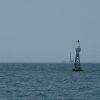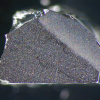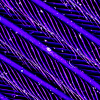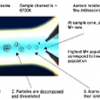Articles
This article sets out to demonstrate the accurate determination of elemental impurities, especially As, in vitamin B12 according to USP chapter <233>.
With a wide range of concentrations of elements in potable waters, their accurate determination is difficult with ICP-MS. It is possible, using a cell-based instrument, to “tune” the signal sensitivity of particular elements and so keep all them within the dynamic range of the instrument.
Estuaries are where much of our marine pollution is to be found, being the gateway between the land and the ocean. They are also where much of our seafood comes. So, knowledge of elemental contamination in estuaries is vital to protect us from the ingestion of polluted seafood.
This article is is a fascinating look into the use of laser ablation inductively coupled plasma mass spectrometry in forensic examination of glass fragments. These are often associated with crime scenes and easily “attach” to any people near them. Thus, they can be used to link criminals to their crime and to provide information on where a glass fragment might have originated.
Stanislav Strekopytov tells us about “The use of inductively coupled plasma mass spectrometry to quantify chemical hazards in natural history collections: arsenic and mercury in taxidermy bird specimens”. It is quite shocking to learn about the use of poisons to preserve taxidermy specimens in the past. Nowadays it is essential that the dangers from such specimens are known before they can be handled by museum staff and particularly if they might be touched by visitors. ICP-MS analysis provides fully quantitative information on bulk contents of toxic elements in taxidermy specimens and so is well suited to this task.
Sotiris Stasinos and Ioannis Zabetakis have used ICP-MS to investigate the cross-contamination of food crops by heavy metals in ground or irrigation water. They show that this can occur easily in certain crops, which has serious health consequences for those consuming the food crop. As a consequence of their work, the European Food Safety Authority (EFSA) has been informed about the accumulation of Cr and Ni in food tubers and is taking action.
This article highlights the versatility of the developed methodology for the measurement of arsenic species in a range of materials from Devon Great Consols (DGC), one of many former mining sites in the south- west of England.
After the progressive development of techniques that yielded results for optimal samples, Laser Ablation Inductively Coupled Plasma Mass Spectrometry (LA-ICP-MS) has at last provided a means of analysing individual fluid inclusions in typical, rather than exceptional, samples. The first truly quantitative LA-ICP-MS analyses of single fluid inclusions were carried out in ETH Zurich in a group led by Christoph Heinrich and Detlef Gunther. They addressed the key issues of ablating into transparent host crystals to release fluid in a controlled manner, minimising interferences and finding suitable calibration strategies, while at the same time quantifying a signal that is typically released over a time of just a few seconds, giving a brief surge in the signal but no definite plateau. The laboratory we have built up in Leeds is based on theirs, but we have significantly developed the data handling.
Inductively coupled plasma-mass spectrometry (ICP-MS) was introduced commercially in 1983 as a very sensitive analytical technique to be deployed for (ultra)trace element analysis. Compared to the previously existing techniques of atomic absorption spectrometry (AAS) and ICP-optical emission spectrometry (ICP-OES), the main advantages offered by ICP-MS over these techniques were its pronounced multi-element capabilities and substantially higher detection power, respectively.
Teresa Jeffries,a Craig Storeyb and Javier Fernandez-Suarezc
aDepartment of Mineralogy, The Natural History Museum, London, SW7 5BD, UK. E-mail: [email protected]
bDepartment of Earth Sciences, The Open University, Milton Keynes, MK7 6AA, UK
cUniversidad Complutense de Madrid, Facultad de Ciencias Geológicas, s/n - 28040, Madrid, Spain
J. Sabine Becker
Central Department of Analytical Chemistry, Research Centre Jülich, D-52425 Jülich, Germany
Ed McCurdy* and Don Potter
Agilent Technologies, Lakeside, Cheadle Royal Business Park, Stockport, Cheshire SK8 3GR, UK. E-mail: [email protected], [email protected]









